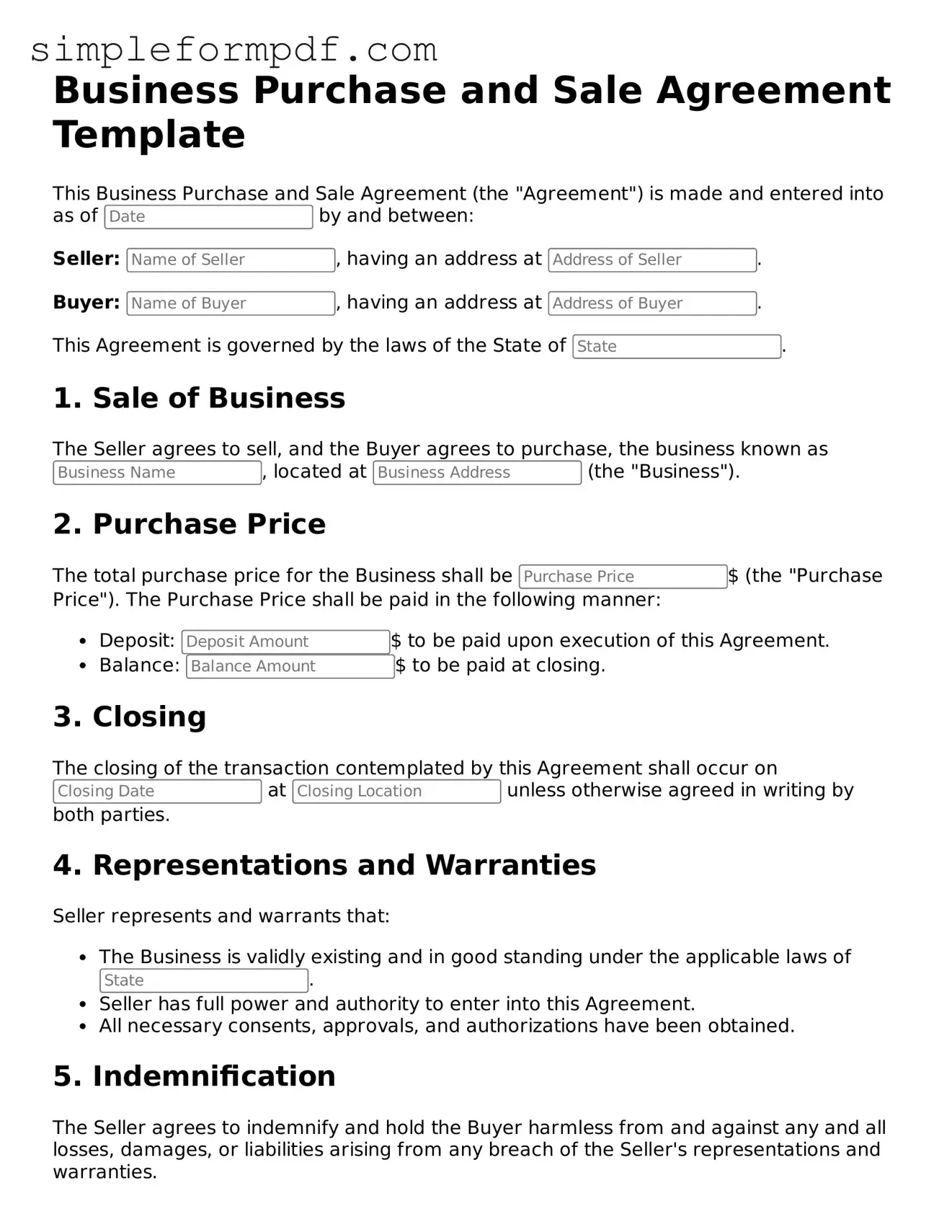Fillable Business Purchase and Sale Agreement Template
A Business Purchase and Sale Agreement is a legal document that outlines the terms and conditions under which a business will be sold or purchased. This agreement serves as a vital tool to protect both the buyer and the seller by clearly defining the responsibilities and expectations of each party involved. Understanding this form is essential for anyone looking to navigate the complexities of buying or selling a business.
To get started on your journey, please fill out the form by clicking the button below.
Launch Editor
